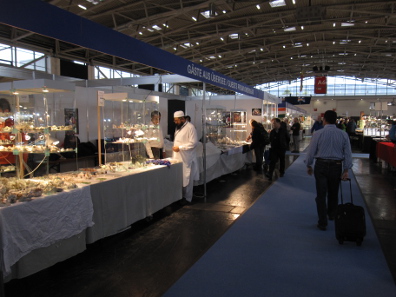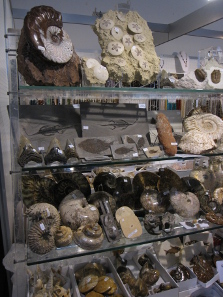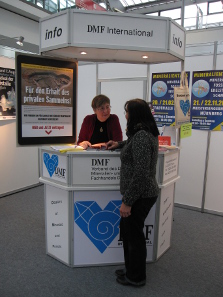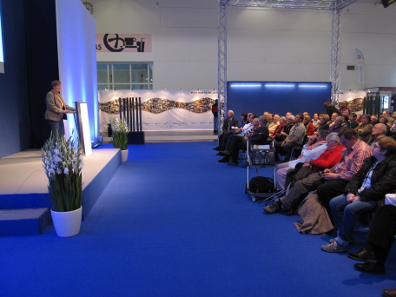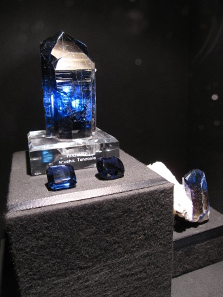November 5, 2015 – From October 30 to November 1, 2015, “The Munich Show” took place in the eponymous city. The most important European trade fair for minerals & fossils, gemstones & jewelry attracts more than 40,000 visitors every year. This year a less positive topic was at the center of attention. As part of the new legislation on the Protection of Cultural Heritage, general and special due diligence procedures will apply to fossils and probably for minerals with a value threshold of 0.
Many exhibitors and visitors of the Munich Show are actually not from Germany. Photograph: KW.
As is tradition, more than 1,200 exhibitors from 63 nations present their fossils, minerals and gemstones at the Munich Show. Hundreds of thousands of objects are on display and offered for sale to a broad audience consisting of people coming from every part of the world.
Despite the fact that they date back thousands of years ago, most of the fossils are anything but rare. Photograph: KW.
If the new legislation on the Protection of Cultural Heritage actually passes, it will be the end of this international fair as we know it. Almost half of the exhibitors and 20% of the visitors coming from abroad, quite a large percentage of the acquisitions and sales have to be imported or exported. The new legislation on the Protection of Cultural Heritage determining a value threshold of 0 for fossils, and probably for minerals as well, will likely have the effect that particularly those who offer material at prices ranging in the lower two- and three-figure regions will not attend the show anymore. Due to these administrative barriers, a trip to Munich will simply be no longer profitable.
Ursula Kampmann informs a collector about the repercussions of the new legislation. Photograph: KW.
It does not come as a surprise, therefore, that many collectors and dealers were outright shocked when they paid the information desk of the Verband des Deutschen Mineralien- und Fossilien-Fachhandels DMF a visit. Dr Ursula Kampmann provided detailed information on the repercussions of the new legislation.
Ursula Kampmann in the lecture hall of the Munich Show. Photograph: KW.
Accompanied by Joachim Walser, a lawyer who is specialized in the legislation on the Protection of Cultural Heritage, Ursula Kampmann held public lectures on Friday and Saturday which were attended by 70 and 120 people, respectively. The succeeding speakers had to be rather patient because the audience kept on asking questions for ages.
With 11,000 carat and a height of 22 centimeters, the Kilimanjaro is the world’s largest individual tanzanite crystal. This is only one of many exhibits from the breath-taking show “Masterpieces”. Photograph: KW.
Over the course of three days, all four worlds – fossils, minerals, gemstones, and jewelry – were dominated by a single topic of discussion: the new legislation on the Protection of Cultural Heritage. And the admirers of fossils reacted: during the last week, more than 3,000 new signatures were added to the petition “For preserving the right to privately collect”. This has to be seen against the background that the internet forum “Steinkern”, the organizers of the “Munich Show” as well as the “Verband des Deutschen Mineralien- und Fossilien-Fachhandels DMF“ support the petition with their expert authority.
Cast of the bone of the Siegsdorf Mammooth, found in 1975, in situ. A unique testimony, it has become a national heritage already. Photograph: KW.



